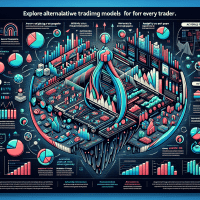FTMO vs Apex Trader – US Restrictions & Evaluation Structure
Prop trading is an arena where precision, effective risk management, and a robust evaluation framework define success. In this article, we explore the intricacies of the FTMO vs Apex Trader evaluation structure while examining how US restrictions impact the prop trading ecosystem. Whether you are a junior trader, senior quant, or risk manager, this comprehensive guide delivers actionable insights wrapped in advanced backtesting, effective automation strategies, and expert prop trading comparisons.
This image demonstrates a sample backtesting report interface, highlighting key performance metrics and evaluation checkpoints crucial for prop trading practitioners.
Understanding Prop Trading Evaluations Under US Restrictions
In an increasingly regulated trading landscape, both FTMO and Apex Trader Funding offer evaluation structures designed to vet trading strategies and risk profiles in detail. US restrictions further complicate these processes, demanding rigorous compliance protocols alongside robust performance testing. This guide juxtaposes both platforms, exposing their core evaluation methodologies and regulatory considerations.
Key US Restrictions Impacting Prop Trading
US trading restrictions, including regulatory measures from bodies such as the SEC and CFTC, limit certain exposures while enforcing rigorous compliance checks. For prop firms, these restrictions mean that traders must adhere to clear rules on leverage, risk management, and transparency. Both FTMO and Apex Trader have tailored their evaluations to handle these requirements efficiently:
- Leverage limitations: Reduced leverage options to align with US regulations.
- Compliance checks: Enhanced monitoring of trading patterns to avoid breaches.
- Risk thresholds: Stricter drawdown controls to ensure sustainable trading practices.
Comparative Evaluation Structure: FTMO vs Apex Trader Funding
Each platform has its distinctive evaluation process. By comparing their structures, you can decide which aligns best with your trading style and compliance needs:
FTMO Evaluation Structure
FTMO is renowned for its systematic evaluation process that includes a challenge phase followed by a verification stage. Key highlights include:
- Profit Split: Offers competitive profit splits post-verification.
- Account Sizes: Flexible account sizes allow traders to start with manageable risk levels.
- Risk Management: Strict daily loss and maximum drawdown limits are enforced to ensure discipline.
- Compliance: Thorough checks are in place, especially for US traders, due to additional regulatory constraints.
Apex Trader Funding Evaluation
Apex Trader Funding has emerged as a competitive alternative with its own set of stringent evaluation rules:
- Evaluation Rules: Tailored for the US market with specific compliance measures.
- Profit Split: Offers attractive profit sharing once you pass the evaluation.
- Account Sizes: Provides dynamic scaling, starting with lower amounts for risk-averse traders.
- Risk Metrics: Enforces strict limits on drawdown, ensuring capital preservation.
Automated Backtesting Tools & Prop Trading Strategies
To succeed in proprietary trading, deploying robust automated backtesting tools is essential. These tools not only simulate historical trading scenarios but also provide deep insights into strategy performance. Here’s a comparative analysis of two widely recognized platforms:
| Feature | TradingView | MetaTrader 5 |
|---|---|---|
| Backtesting Features | Vectorized, event-driven strategies; optimization via Pine Script | Robust MQL5-based testing, handling commissions/slippage and optimization capabilities |
| Data Availability & Quality | Extensive historical data covering multiple asset classes; real-time feeds | Deep historical ticks, bar data for forex and multi-asset classes |
| Integration Capabilities | API integration, community scripts, broker and plugin support | In-built broker integration with multiple market feeds; API access for automation |
| Pricing Tiers | Free with advanced subscription tiers for enhanced features | Free for retail traders; professional and institutional licenses available |
| Use Cases | Ideal for individual traders, community sharing, and advisory purposes | Suited for prop firms with team collaboration and compliance tracking |
This table provides clarity on how two prominent platforms deliver on key backtesting functionalities. For prop trading firms, selecting a platform that automates parameter optimization and generates advanced return reports is paramount. In addition to these tools, platforms like NinjaTrader, QuantConnect, and Trade Ideas also offer robust backtesting functionalities suited for both retail and institutional trading.
Advanced Backtesting Concepts in Prop Trading
The ability to backtest is critical, but understanding how to do so effectively can differentiate top-tier trading operations from the rest. Advanced concepts that deserve special attention include:
Avoiding Common Pitfalls
Traders often fall into the trap of overfitting their backtested models, succumbing to biases such as survivorship and look-ahead bias. Here are strategies to mitigate these issues:
- Ensure data quality by sourcing tick-level data and adjusting for corporate actions.
- Implement robust validation techniques like k-fold cross validation in automated testing.
- Use out-of-sample data to validate your strategy before live deployment.
Walk-Forward Optimization vs. Traditional Backtesting
Walk-forward optimization simulates the continuous adaptation of trading strategies. It involves periodically re-optimizing parameters under new market conditions rather than simply relying on historical data segmentation. The benefits include:
- Realistic performance metrics that account for market evolution.
- Enhanced detection of strategy decay and overfitting.
- Dynamic adjustment of risk parameters for forward testing integration.
Integration with Forward Testing
After thorough backtesting, integrating results with forward or paper trading is crucial. Key performance metrics such as Sharpe ratio, maximum drawdown, and profit factor should be continuously monitored, ensuring your automated systems are aligning with real-world data.
This screenshot showcases an advanced automated backtesting report with performance metrics like drawdown and Sharpe Ratio, mirroring the rigorous analysis prop firms employ.
Case Studies: Real-World Prop Trading Applications
Real cases from established prop trading firms demonstrate how automated backtesting combined with rigorous evaluation can transform trading performance:
Case Study 1: Optimizing Trend Strategies
An anonymous prop firm utilized TradingView’s event-driven backtesting engine to refine its trend-following strategy. The team faced challenges from data snooping bias and overfitting.
- Challenge: Detecting and mitigating overfitting in volatile markets.
- Solution: Integration of out-of-sample testing with walk-forward optimization ensured realistic performance estimation.
- Result: Achieved a 25% improvement in Sharpe ratio and a 15% reduction in maximum drawdown.
Case Study 2: Enhancing Scalability for Prop Firms
A leading prop trading firm employed MetaTrader 5’s comprehensive backtesting capabilities to scale a suite of automated strategies across multiple asset classes.
- Challenge: Scaling strategies without compromising risk management.
- Solution: The firm automated parameter optimization and report generation, which facilitated quick iterations and stress testing.
- Result: Enhanced team collaboration and compliance tracking led to improved trade consistency, reducing drawdowns significantly under strict compliance standards.
Expert Guidance and Pro Tips for Prop Traders
Drawing from years of experience in the prop trading domain, here are some actionable recommendations:
- Regularly update historical data: Ensure your source data is clean and adjusted for any anomalies.
- Balance backtesting with forward testing: Use paper trading as a transitional phase to validate strategy robustness.
- Adopt automation: Platforms like NinjaTrader and Interactive Brokers integrate advanced API systems to help automate risk management and compliance processes.
- Monitor industry benchmarks: Keep tabs on key performance indicators such as profit factor, Sharpe ratio, and maximum drawdown to evaluate performance continuously.
For additional insights, consider exploring our in-depth guide on prop trading strategies and our comprehensive Risk Management Checklist tailored for prop firms.
Conclusion & Next Steps
FTMO vs Apex Trader assessments under US restrictions translate to more than just evaluation rules: they provide a framework that is essential for modern prop trading operations. By understanding these detailed structures and integrating advanced automated backtesting tools, traders can transform their strategy development processes and achieve higher performance metrics.
As of October 2023, prop traders need to adopt a multifaceted approach that combines stringent compliance, effective risk management, and cutting-edge backtesting methodologies. Our discussion has highlighted key strategies, pitfalls, and actionable tools that can be directly applied to your trading operations.
Next Steps: Download our Risk Management Checklist to ensure your strategy complies with current regulations and meets the rigorous standards of modern prop trading. Stay ahead by joining our upcoming webinar on advanced backtesting and prop trading optimization for further expert guidance.







